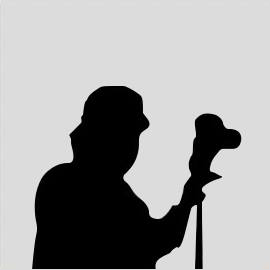
Diarna, “Our Homes” in Judeo-Arabic, is the flagship initiative of Digital Heritage Mapping, Inc., a 501(c)(3) non-profit specializing in digitally preserving historic and cultural sites worldwide. The project pioneers the use of digital mapping technologies to explore the unfolding of Jewish history in the Middle East and North Africa through the prism of physical location by digitizing individual sites (schools, cemeteries, synagogues, shrines) and memories.
Anyone with an Internet connection can use Diarna to travel across the region as if on eagles' wings, unaffected by political and inter-religious strife below. Previously unknown or difficult to visit sites are now "visitble" via Diarna's weaving and synthesizing of satellite imagery, immersive panoramas, three-dimensional architectural models, archival and contemporary photography, scholarship, and oral history recordings.
Dirven by a team with diverse background and outlooks--including young Muslims eager to discover their shared history--Diarna has been: featured as a resource for scholars in the "Encyclopedia of Jews in the Islamic World" (Brill Publications, 2010); recognized as one of the 50 most innovative Jewish projects in North America by the Slingshot Fund (2009-2010); the subject of a panel at the Association of Jewish Studies' 42nd Conference; profiled in Haaretz (http://goo.gl/2N9VZ); and is partnered with Wellesley College, the Alliance Israélite Universelle, Beit Hatfutsot: The Museum of the Jewish People, and the Yad Ben-Zvi Institute.
The immersive panos published here are an advance preview of The Diarna Project's D'fina exhibit (http://www.JewishMorocco.org), dedicated to uncovering the "buried" or "covered" Jewish treasures of Morocco.
Spanning the entire country, from metropolitan centers to remote villages, D’fina proffers a virtual passport to visitors wishing to explore mountain-top shrines of Jewish “saints” that continue to be voluntarily protected by Muslim caretakers, scorpion-guarded genizot (burial grounds for holy texts and objects), anthropomorphic tombstones in seaside cemeteries, synagogues on the edge of the Sahara Desert, and ancient urban quarters with hidden reminders of their one-time residents. This exhibit marks the first public showing of documentation on the majority of these sites, including several Vichy regime desert labor and “discipline” camps where hundreds of Jews and non-Jewish political prisoners toiled, suffered torture, and died during the Holocaust.

http://www.vimeo.com/user3470749/videos
I have always enjoyed photography, wildlife and travel, so upon retirement, have pursued all these passions. Photography, is however, my greatest passion. In the last 6 years, my focus has been on wildlife photography. I have been fortunate to have close to a million hits on my pbase site, a museum showing, pictures published in magazines and bird books, many prints displayed and sold at our local bird store and over 200 photos on the Apple Ibird Pro application. Always up for a challenge, I am now enjoying the VR 360 panoramas. Hope you enjoy them as well.

I started my career as an officer in the early nineties. My big interest in technology led me early into the field of planning IP networks for the Swedish armed forces. After a few years, I went out civilian and worked with the development of data warehousing. Now I am working on a telecom operator with mostly solution architecture in major IT projects and with Enterprise Architecture in general.
My interest in photography has followed me through the years, some of it you can see in my photo blogg fotosmeden.se.

1963 - erste Fotos mit Boxkamera 6x6
1978 - erste selbst entwickelte SW Fotos mit Rollei SE35
1983 - erste einreihige Panoramen mit Farbfotos Schere und Kleber und NIKON F3, MANFROTTO 55
2002 - erste einreihige digitale Panoramen mit CASIO QV-4000, OLYMPUS C8080WZ und NIKON D50
2008 - erste mehrreihige Panoramen mit NIKON D300, TOKINA ATX 12-24 und NODAL NINJA 3
2011 - mein größtes Gigapano 151.000 x 32.000 Pixel - Dateigröße 13,6 GB
2012 - neues Equipment NIKON D800E, NIKKOR 2,8 14-24, NODAL NINJA 4
wer Rechtschreibfehler findet, darf sie gerne behalten und/oder vermarkten.
1963 - first pictures with box camera 6x6
1978 - first self-developed BW with photos Rollei SE35
1983 - first single-row panoramas with scissors and glue and color photos NIKON F3, 55 MANFROTTO
2002 - first digital single-row panoramas with CASIO QV-4000, Nikon D50 and Olympus C8080WZ
2008 - first multi-row panoramas with Nikon D300, TOKINA ATX 12-24 and NODAL NINJA 3
2011 - my biggest Gigapano 151,000 x 32,000 pixels - File Size 13.6 GB
2012 - New Equipment Nikon D800E, Nikkor 14-24 2.8, NODAL NINJA 4
Who finds spelling mistakes may like to keep and / or sell.

Lydén Photography is owned and operated by me, Peter Lydén. I have many years of experience in still photography. Over the years my clients have been both editorial and commercial. Today I focus on innovative techniques such as 360° photography, gigapixel photography and time-lapse.
Please visit www.lyden.se to find out more.

Auf meiner Homepage Oberpfalzpanorama befinden sich Kugelpanoramen, 3D-Bilder und weitere Fotos aus der Oberpfalz in Bayern. Wenn ihr immer über neue Bilder informiert sein wollt, dann folgt mir auf Twitter oder or Facebook. Kontakt: info (at) oberpfalzpanorama.de
My homepage Oberpfalzpanorama shows spherical panos, 3d pics and photos of Upper Palatinate, a region in Bavaria, Germany. Feel free to visit it! You can also follow me on Twitter or or Facebook and you'll get informed of new stuff. Email: info (at) oberpfalzpanorama.de
















































